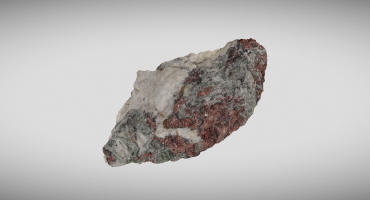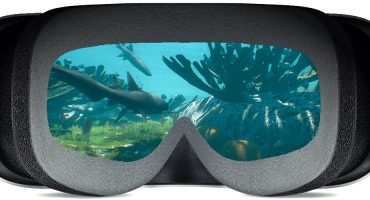About
My name is Théobald Guffon and I’m a French freelance geologist. I studied at the IPGS-EOST in Strasbourg and specialized in Alpine geology, petrography, and fieldwork. I run my own company and work as a consulting geologist and 3D imaging professional (photogrammetry + 3D printing). You can have a look at my website for more information (in French).
During my studies, I took part in partnerships in order to improve the diffusion of geosciences. I think that it is very important to spread knowledge and give educational access to people. To this end, I worked with museums to create scientific mediation workshops and started a YouTube channel to introduce geosciences in partnership with an educational association (in French).
I discovered photogrammetry during my Master’s degree thanks to a colleague and it impressed me a lot! This technology has huge potential in geosciences. For example, it’s easier to study an outcrop using a 3D model than it is using only a few pictures.
For some time, I have been creating a virtual gallery of rock samples, minerals, fossils, and outcrops and I plan on helping museums create virtual replicas of their collections. In my mind, it is very important for scientists, teachers, and neophytes to have access to museum collections through the internet in order to open scientific domains to everyone.
3D technologies can help shed light on geosciences collections thanks to scanning, modeling, printing and, more precisely, photogrammetry.
Photogrammetry models by Théobald GUFFON on Sketchfab
Geosciences & 3D
Geoscience is a wide scientific domain that includes geology, geophysics, geochemistry, and a lot more! An important use of 3D technologies in such domains is that they improve our understanding and simplify our work. As an example, an aerial photogrammetry model of a mountain can help us to better understand how the sedimentary layers were folded when the mountain was raised.
In industry, such technologies are already used to model quarries or oil reservoirs, but 3D has a lot more to offer! Academically, 3D allows you to instantly send models of specimens and outcrops to scientists on the other side of the world, or to create a record of geological features before a destructive analysis. Moreover, 3D technology can also be used for spatial mapping and reconstruction.
For educational purposes, 3D models and 3D prints are a playful, modern, and cheap way to show children scientific or rare materials. This is a way to give more visibility to our cultural heritage and to scientific museums on the principle of open science.
In my opinion, 3D technologies will develop a lot in the scientific domains in the coming years because they allow us to save, copy, and distribute physical elements.
When I discovered Sketchfab, the first models I uploaded were the models of fossils from the Messel deposit I saw at an exhibition in France. These fossils are very interesting because they are incredibly well preserved! If you zoom in on the model of this crocodile, you will be able to see the details of its skin. I was stunned by the preservation of this 50-million-year-old fossil and I wanted to capture a 3D model of it so everyone could admire it. To me, a 3D model is more instructive than a picture where natural sciences objects are concerned.
Fossils from Messel by Théobald GUFFON on Sketchfab
Photogrammetry Hardware
I will give you a glance of the hardware I use for photogrammetry.
I have a (very) good computer, with a new generation CPU (i7) and a 1070 Nvidia (because of CUDA) GPU, with a lot of RAM (16GB) and a good cooling system because photogrammetry softwares are highly demanding.
I use a 20 Megapixel hybrid camera (Panasonic GH5), mostly with a 12-60mm zoom lens in order to more easily adapt my view. But I also sometimes use a macro lens for small objects or a big focal length for huge outcrops.
As I mostly work on objects, I use a big and heavy Manfrotto tripod so my camera won’t move at all. I use 2 or 3 strong LED lights at 5500K for natural color (dimmable LED panels) and a turntable with a background (I use thick matte white paper sheets). I built my own manual turntable, but it’s easy to find everything from expensive controlled turntables to very cheap lazy susans.
An important tip, which I discovered by experimenting, is that I get better results with a circular polarizing filter on my lens and linear polarizing filters on my lights. This combination allows me to avoid all reflections on the object. This is a real challenge concerning minerals because most of them have highly reflective surfaces. In these particular cases, I can’t use something to cover the objects to avoid reflections. Thanks to the polarizing filters, this tricky problem of glassy or metallic radiance is easily overcome.
As a picture is better than a thousand words, you can see below the effect of polarizing filters on a 3D printed reproduction of a fossil:
Photogrammetry Software
Personally, I use Meshroom (which is completely free), 3DF Zephyr Lite (which has a nice free version), and RealityCapture (which charges for export or subscription), but it depends on your budget and use.
There are free useful auxiliary softwares, too. I often use programs like De-Lighter to remove shadows on textures, Instant Meshes to improve the mesh, Blender to repair the model, GIMP to repair the textures and the very useful Windows 3D Viewer because it’s a fast way to see your models.
In order to give the models a more realistic appearance, I work on texture mapping to create a physically-based rendering (PBR) model. I use softwares like Blender and xNormal to bake the normal and ambient occlusion maps and GIMP to generate the glossiness, roughness and specular maps. This process allows me to obtain not only a photogrammetry model, but a model that behaves with light like the real object (reflections, matte surfaces, shadows, etc.).
3D Printing
I have used FDM 3D printing for some time and I am convinced that these machines are absolutely amazing and will have an enormous impact on the way we consume information and learn.
Even if this seems obvious, I had not made the link between photogrammetry and 3D printing until recently. I didn’t realize that these two methods were so powerful. Most models on Sketchfab are not intended for 3D printing, but by working on them a bit you can obtain wonderful and original printed objects.
As an example, I printed some of my photogrammetry models and some other models I found on the site. They all look amazing and, to me, being able to copy specimens will have a huge impact on how we teach natural sciences; the process allows students to practice on cheap printed models.
Even if I can directly slice my photogrammetry models in a software like Cura (which is free) and hope the outcome will be good, I like to modify the model first. There are a lot of free softwares that I use for that: Meshmixer to clean and repair the mesh, Blender to sculpt the model, and Fusion360 to add a stand to the model, for example.
I currently have two 3D printers to print photogrammetry models, a Geeetech Dual-Color and a highly personally modified single-extruder Longer. I also occasionally rent one in a FabLab or order from a 3D printing company. To me, dual-extruder (or more!) printers are very useful because I can achieve more complex and nicer models.
Prospect
As a geologist, I’m interested in expanding the range of my photogrammetry by trying aerial and micro photogrammetry.
With a drone, doing photogrammetry on an outcrop will be easier, and a drone would allow me to make a photogrammetric model of a whole mountain. Visualizing and printing this model to have a virtual and a hand-sized version of the real-life feature would help researchers to understand such areas and make reconstructions.
Micro-photogrammetry uses a microscope (even an SEM!) to take pictures of very small samples, such as minerals, and uses them to reconstruct a 3D model. I already saw nice results of this workflow and I’m very excited to try it someday!
In an ideal world, I would like to improve my work by using laser scanners for modeling combined with photogrammetry for texturing, and, by constructing an automated motion turntable synchronized with 4 cameras, to increase the speed of the process.
I am currently looking for contacts in natural sciences museums, and, more precisely, geosciences museums, in order to develop partnerships and to diversify my activity.
Conclusion
I have some pro-tips to give you if you want to start doing photogrammetry combined with 3D printing:
- Be patient, very patient, because you will learn a lot from trial and error.
- Start small with objects that are optimal for photogrammetry.
- Vary your tests, try different things to understand which way works the best.
- Take notes, a lot of notes, it will help you identify the problems you encounter and find a solution.
If I have the opportunity, I would love to try photogrammetry on a dinosaur, or even a paleontological excavation site! I also would like to push photogrammetry to the limit and try it in difficult in-situ conditions, like a mine.
I think that my favorite model on Sketchfab is the model of the Tyrannosaurus Rex and Triceratops fight made by the Smithsonian DPO on Thomas Flynn’s page.
My favorite user is Digital Atlas of Ancient Life from PRI because people working on this project are doing an amazing job with fossils!
by Digital Atlas of Ancient Life on Sketchfab
If you are interested in photogrammetry and 3D printing, more especially concerning geosciences, feel free to contact me to ask questions, discuss my workflow or hire my services.











